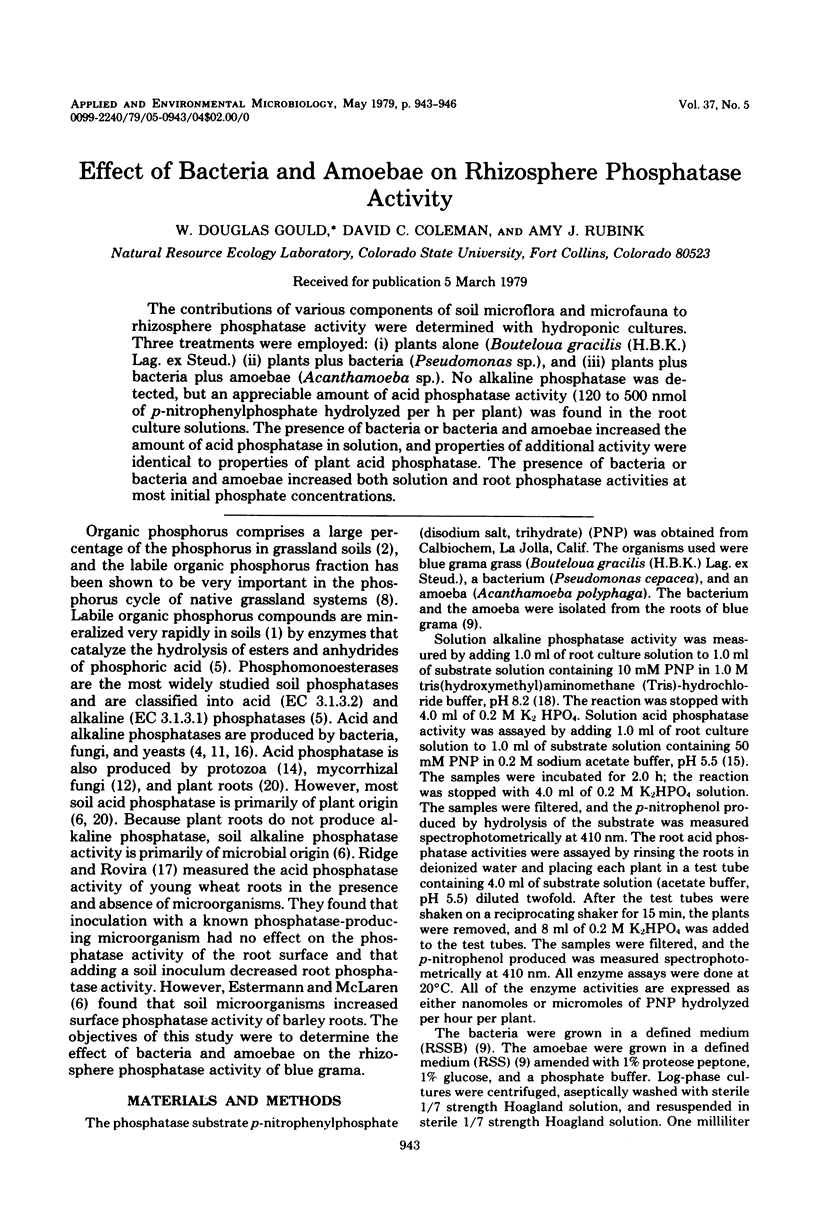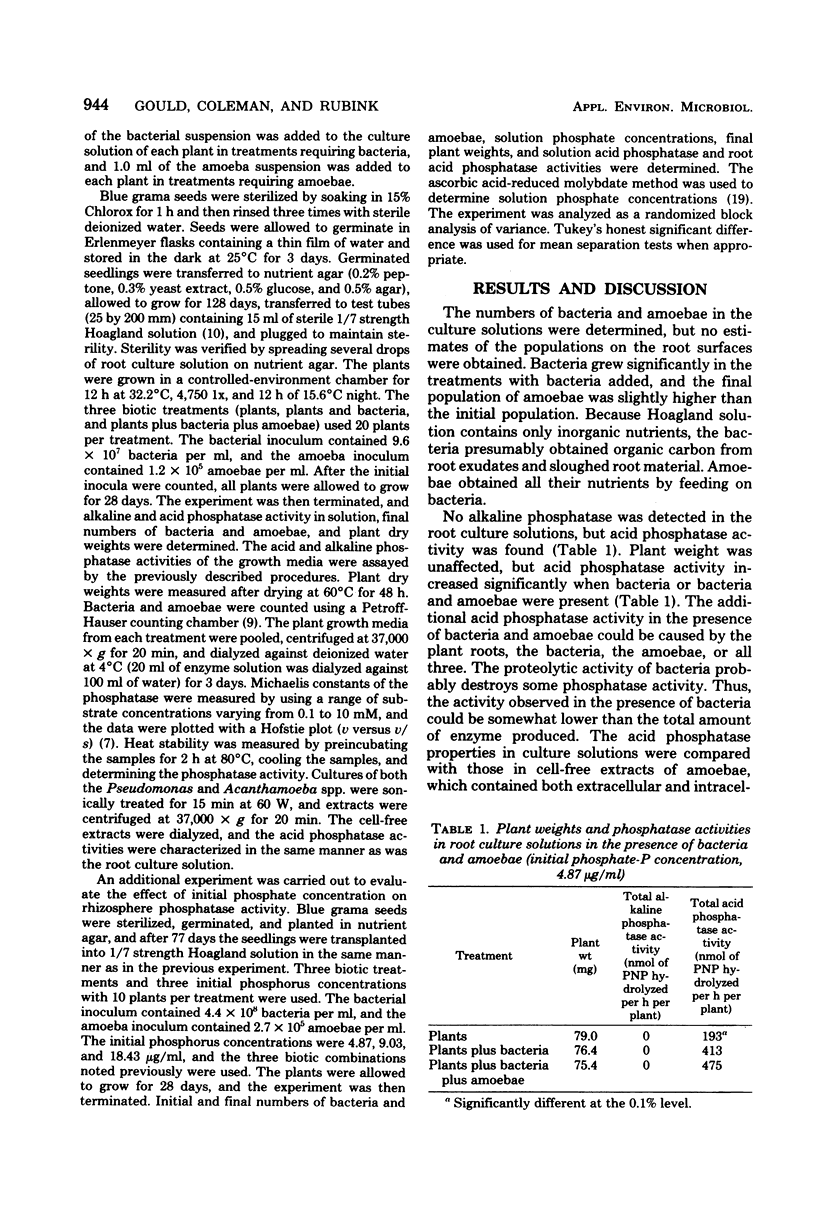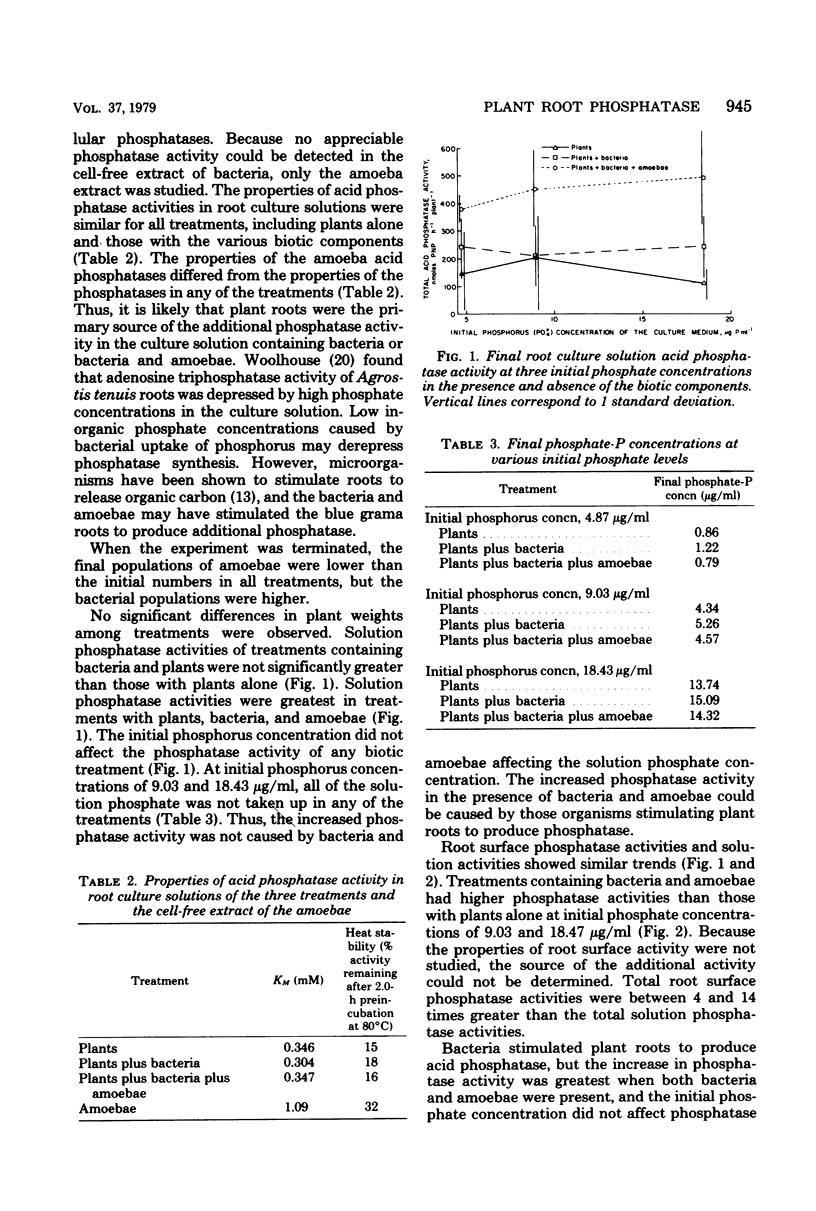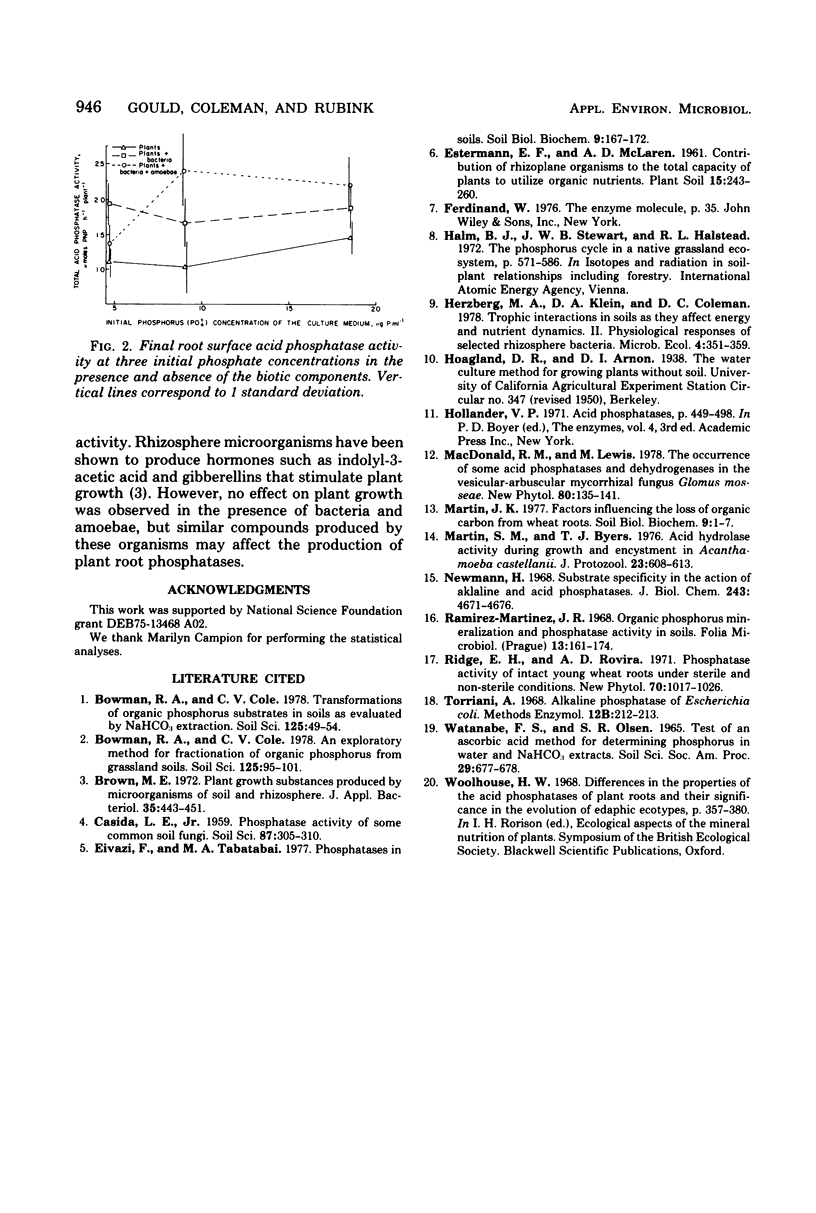Abstract
The contributions of various components of soil microflora and microfauna to rhizosphere phosphatase activity were determined with hydroponic cultures. Three treatments were employed: (i) plants alone (Bouteloua gracilis (H.B.K.) Lag. ex Steud.) (ii) plants plus bacteria (Pseudomonas sp.), and (iii) plants plus bacteria plus amoebae (Acanthamoeba sp.). No alkaline phosphatase was detected, but an appreciable amount of acid phosphatase activity (120 to 500 nmol of p-nitrophenylphosphate hydrolyzed per h per plant) was found in the root culture solutions. The presence of bacteria or bacteria and amoebae increased the amount of acid phosphatase in solution, and properties of additional activity were identical to properties of plant acid phosphatase. The presence of bacteria or bacteria and amoebae increased both solution and root phosphatase activities at most initial phosphate concentrations.
Full text
PDF



Selected References
These references are in PubMed. This may not be the complete list of references from this article.
- Martin S. M., Byers T. J. Acid hydrolase activity during growth and encystment in Acanthamoeba castellanii. J Protozool. 1976 Nov;23(4):608–613. doi: 10.1111/j.1550-7408.1976.tb03851.x. [DOI] [PubMed] [Google Scholar]
- Martínez J. R. Organic phosphorus mineralization and phosphatase activity in soils. Folia Microbiol (Praha) 1968;13(2):161–174. doi: 10.1007/BF02868220. [DOI] [PubMed] [Google Scholar]
- Neumann H. Substrate selectivity in the action of alkaline and acid phosphatases. J Biol Chem. 1968 Sep 25;243(18):4671–4676. [PubMed] [Google Scholar]


